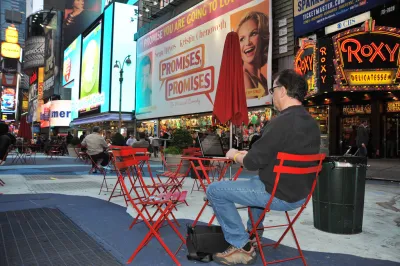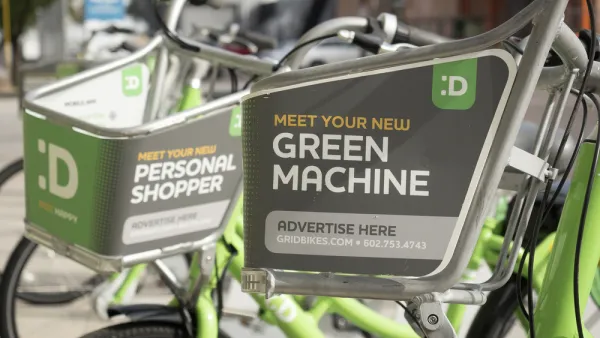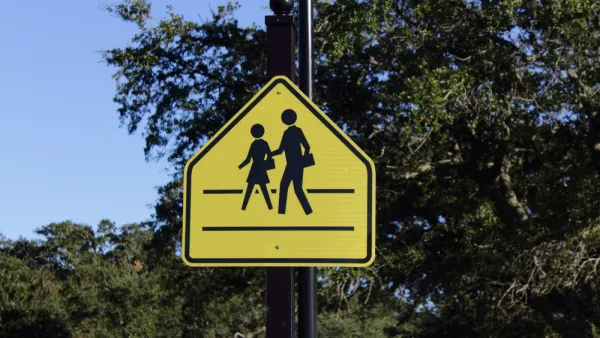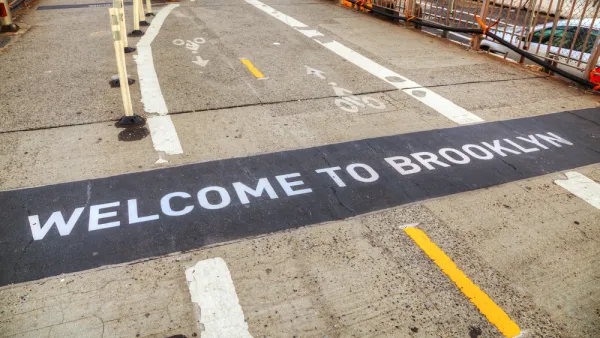A review and summary of Janette Sadik-Kahn's "Street Fight: Handbook for an Urban Revolution," by Bay Area architect and environmentalist Todd Jersey.

The short version of how Janette Sadik-Khan and her team transformed New York City streets to make them more bike and pedestrian friendly is that they: 1) started small, and built on the success of each project; 2) used creativity, planning, and paint, rather than construction and expense; and 3) researched, used data, and were tireless in their efforts to convince businesses, residents, and representatives to give the projects a try. In a review and summary of Sadik-Khan's book about her experience, Bay Area architect and environmentalist Todd Jersey writes:
. . . as those of us in the trenches of reclaiming the public realm from car dominance know, the loudest voices of resistance are owners of street-facing (mostly) small businesses. Sadly, these business owners cling to the old idea that shoppers come by car and that any changes to how cars move and park have a negative impact on sales. The book tells a different and important story (which Sadik-Kahn counsels we must know well in order to educate others). That is, contrary to the decades-old popular belief, it’s pedestrians (and now bicyclists in increasing numbers) that drive sales to street-level businesses, not drivers of cars. There is now an ever-increasing amount of research that demonstrates conclusively that changes to our streets which support bike and pedestrian activity have a profoundly positive impact on street-level businesses.
Jersey also summarizes several of her projects, and notes that this type of "rebalancing" of streets is not only important to making urban environments more pleasant and equitable, but is critical for saving thousands of lives each year lost to car vs. pedestrian collisions. If you've been wondering whether to read Sadik-Khan's book, start with Jersey's review.
FULL STORY: How Sadik-Khan clawed back the streets of NYC for walkers and bikers – book review

National Parks Layoffs Will Cause Communities to Lose Billions
Thousands of essential park workers were laid off this week, just before the busy spring break season.

Retro-silient?: America’s First “Eco-burb,” The Woodlands Turns 50
A master-planned community north of Houston offers lessons on green infrastructure and resilient design, but falls short of its founder’s lofty affordability and walkability goals.

Delivering for America Plan Will Downgrade Mail Service in at Least 49.5 Percent of Zip Codes
Republican and Democrat lawmakers criticize the plan for its disproportionate negative impact on rural communities.

Test News Post 1
This is a summary

Test News Headline 46
Test for the image on the front page.

Balancing Bombs and Butterflies: How the National Guard Protects a Rare Species
The National Guard at Fort Indiantown Gap uses GIS technology and land management strategies to balance military training with conservation efforts, ensuring the survival of the rare eastern regal fritillary butterfly.
Urban Design for Planners 1: Software Tools
This six-course series explores essential urban design concepts using open source software and equips planners with the tools they need to participate fully in the urban design process.
Planning for Universal Design
Learn the tools for implementing Universal Design in planning regulations.
EMC Planning Group, Inc.
Planetizen
Planetizen
Mpact (formerly Rail~Volution)
Great Falls Development Authority, Inc.
HUDs Office of Policy Development and Research
NYU Wagner Graduate School of Public Service





























